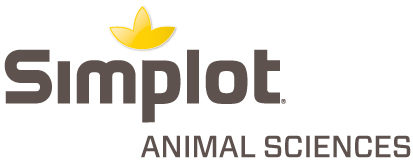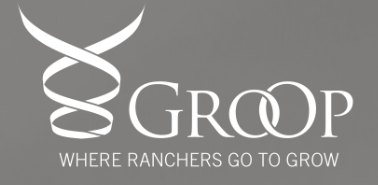The seminar was a collaborative effort between the UC Davis Veterinary Medical Teaching Hospital – Livestock Medicine and Surgery Service, the Food Animal and Reproduction (FARM) Club and the Behavior Medicine Club.
The goal of this annual seminar is to support the beef ranching community in California by providing information on how to improve cattle handling and welfare, and to give an overview of current beef industry related issues that occur in California.
The dean of the UC Davis School of Veterinary Medicine, Michael Lairmore, gave the welcome speech, acknowledging the collaborative efforts that brought the many producers to this event. He went on to describe the ways that the school is trying to reach out to ranching communities through education and by supporting the livestock industry by providing excellent trained veterinary graduates.
Lynn Locatelli was the key speaker of the seminar and held two talks on low stress cattle handling tips and techniques. As a veterinarian and UC Davis alumna, Locatelli has developed low stress cattle handling as a career. She trains personnel all over the country in how to move and handle cattle within their operations.

Her main points of de-stressing the herd and sorting techniques drove home the idea that low stress handling can improve cattle welfare and increase cattle productivity.
Locatelli's talk was followed by the topic of beef lameness and cattle hoof health, given by Anita Varga of the UC Davis Veterinary Medical Teaching Hospital – Livestock Medicine and Surgery Service.
Varga emphasized how lameness in cattle can have a economic impact on cattle productivity and she discussed the most common claw disorders that occur in beef cattle.
Nancy Martin of East Meets West Livestock Services followed with her presentation on how the predator-prey relationship can be used as a model for holistic beef cattle production. She continued the theme that cattle can be managed in more natural ways by evaluating the whole animal instead of just looking at individual parts.
The lunch break allowed veterinary students, veterinary faculty, ranchers and cattlemen the opportunity to co-mingle while filling up on Mexican food and exploring the sponsor exhibits.
Jeffrey Stott, a professor at the UC Davis School of Veterinary Medicine, gave an in-depth talk about recent updates on the organism that causes foothill abortion – a bacteria carried in the Pajorella tick. When the tick spreads the disease to a heifer or cow, the infection will lead to late term abortions and delivery of weak calves.
The susceptibility of previously unexposed cattle is especially high during days 60 to 120 of pregnancy. Once the animal is infected, treatment with antibiotics does not work.
Stott is actively involved in the development of a live vaccine against foothill. So far, his research has not found a significant effect on conception or early embryonic death associated with the vaccine. However, he has noticed that approximately four to six weeks after inoculation the cattle show an injection site lesion.
Jim Oltjen of the UC Cooperative Extension gave producers an update on the 2011 National BQA Audit, making note of the future changes in regards to animal disease traceability and how the added infrastructure will protect producers’ proprietary information.
Following was a presentation on current cattle-welfare-related research from the UC Davis Animal Science department, presented by Cassandra Tucker.

One of her projects compared the application of a cooling gel after branding and its effects on skin healing. The results of the study showed only a short-term effect within the first 24 hours but did not lead to a difference in pain perception of the branding site when compared with calves branded without cooling gel.
Tucker also briefly explained other beef cattle welfare research projects she is involved with, such as the assessment of behavioral changes that occur in cattle when battling a respiratory infection or the use of non-steroidal anti-inflammatories to decrease pain from castration.
Morgan Doran of UC Cooperative Extension talked about different strategies that can be used to get products to market and gave an overview of the different labels currently on the market.
Matt Cuneo of the UC Davis Herd Health and Reproduction Service then provided an update on humane ranch side euthanasia by utilizing the Veterinary Emergency Response Team steer model. With this dummy steer, he was able to show ranchers the proper way to humanely end an animal’s life.
Cuneo illustrated that the previous recommendation for proper location of a gunshot or captive bolt were too low. Current recommendations for optimal placement are to make imaginary X from the outside corner of the eye to the base of the opposite horn using the center of the X created by this as the marker for placement of the captive bolt.
It was a pleasure to listen John Maas of the UC Cooperative extension. His informative talk about Anaplasmosis in beef cattle rounded up the seminar nicely.
Maas gave a couple of challenging Anaplasmosis case examples, which led to an active discussion and gave participants an even better understanding of the current recommendations regarding treatment, testing, and vaccination of cattle that have been infected, or are at risk of being infected.
He also reminded the audience that when exposed, older cattle not previously exposed to Anaplasmosis generally become very ill, with an even higher mortality rate than unexposed younger cattle.
The seminar received support from the veterinary students, the UC Davis Veterinary Medical Teaching Hospital and the UC Cooperative Extension.
The Third Beef Improvement and Low Stress Cattle Handling Seminar will be held on Saturday, Jan. 11, 2014. Suggestions for future topics can be submitted to Varga by email. ![]()
PHOTO
TOP: Jim Oltjen gives producers an update on the 2011 National BQA Audit.
MIDDLE: The FARM Club and Behavior Medicine Club students with some of the speakers.
BOTTOM: Students helping at the registration desk. Photos courtesy of UC Davis Veterinary Medical Teaching Hospital – Livestock Medicine and Surgery Service.







